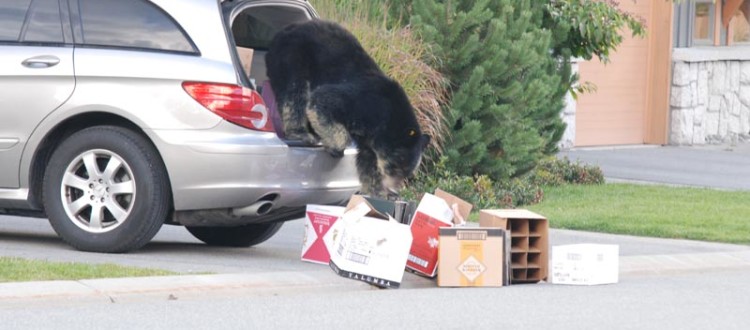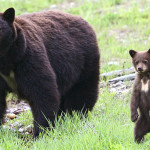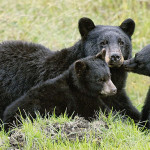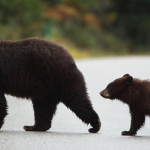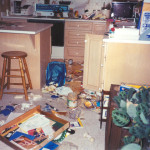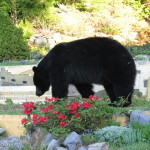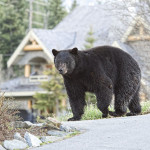Bears Will Be Bears
A few years ago, a bear got into a garage in Whistler and got into some birdseed stored there [watch the video clip]. This wouldn’t be a particularly unusual story, except that he got into the garage by turning the handle on the garage door and walking in. Once inside, the bear ate some birdseed and left his calling card on a shiny Harley Davidson. At some point, though, the bear must have gotten a bit panicked when he realized there was no easy way out of the garage. There were muddy paw prints on a window high off the ground where the bear must have climbed up to check if it might work as an exit. Eventually, he must have decided that the best way out was the way he came in: through the door. This required him to once again turn the door handle, but this time he had to pull the door inward at the same time. Apparently, this wasn’t that much of a problem because the bear managed to drag out two bags of garbage while holding the door open.
And proving it was no accident, he came back the next day, opened the door, got more snacks, and left again.
Because bears are so intelligent and motivated to find food, it’s important to stay on top of the situation by properly managing attractants. You can’t change the nature of bears; they’re always going to be looking for food. Unfortunately, if you allow them to access food in peopled areas, they tend to keep upping the ante.
Look at situation in some of the American Parks where bears have learned to break into cars to get food. Not only have they mastered the art of breaking into cars, but they also know the cars by model so that they can break into a car based on the most efficient method for that model of car. A couple of years ago, I was hiking in the Stein Valley and met a couple from the States. A friend of theirs had driven to visit a park and left his car – with some kind of foodstuffs in the trunk. A bear came along and decided to access the food, but he got the model of the car mixed up with one that had a fold-down back seat. In the models that have a fold-down back seat, the best method of breaking in is to go through the back door and ‘put down’ the back seat to access the trunk.
However, as I mentioned, he got it mixed up and once he had pulled off the back door, he discovered that the car was not a model where the back seat folded down. Perhaps the bear was a bit embarrassed having gotten this far before he realized his mistake, or perhaps he was ticked off because someone had left this snack for him in a car without a fold-down seat – at any rate, he decided to ignore the problem and make it a fold-down seat. Which unfortunately totaled the car.
This wasn’t a single incident in parks such as Yosemite. Bears were breaking into cars all the time and causing thousands of dollars in damage. In fact, in 1998, there were more than 1,317 incidents in Yosemite alone, causing $630,000 in damage to cars and property.
Park managers needed a solution fast. They decided that bears will be bears and so they focused on changing the humans’ behaviour. They began issuing tickets to people who left food in their cars, installed bear-proof lockers, and set up educational videos in places like the check-in desks in hotels. They developed educational brochures and flyers and hired rangers to talk to visitors and explain the situation. After only a year, the incidents dropped to 527 and the damage to $183,494. And a lot fewer bears had to be killed.
More recently, the park has initiated the use of aversive tactics to return bears to the wild. These have included chasing bears out of parking lots, campgrounds, and housing areas using noise, sling shots, rubber slugs and bear dogs.
In Whistler, in the last few years, there have been more and more incidents of bears breaking into homes and cars. Because we’ve fed them and allowed them to get used to being in peopled areas, they’re upping the ante. There have been recent cases where bears broke into vehicles for empty cookie pans and the wrapper from a Power Bar.
Perhaps we had better acknowledge the intelligence of the bears and learn our lesson. If we continue doing things the way we have been – such as leaving food, garbage, used diapers and other attractants accessible to the bears, we are responsible if the situation gets worse. Instead, we need to clean up our act (and our yards) and return bears to the wild by making sure they know they’re not welcome as dinner guests in urban areas.
by Catherine Sherlock

